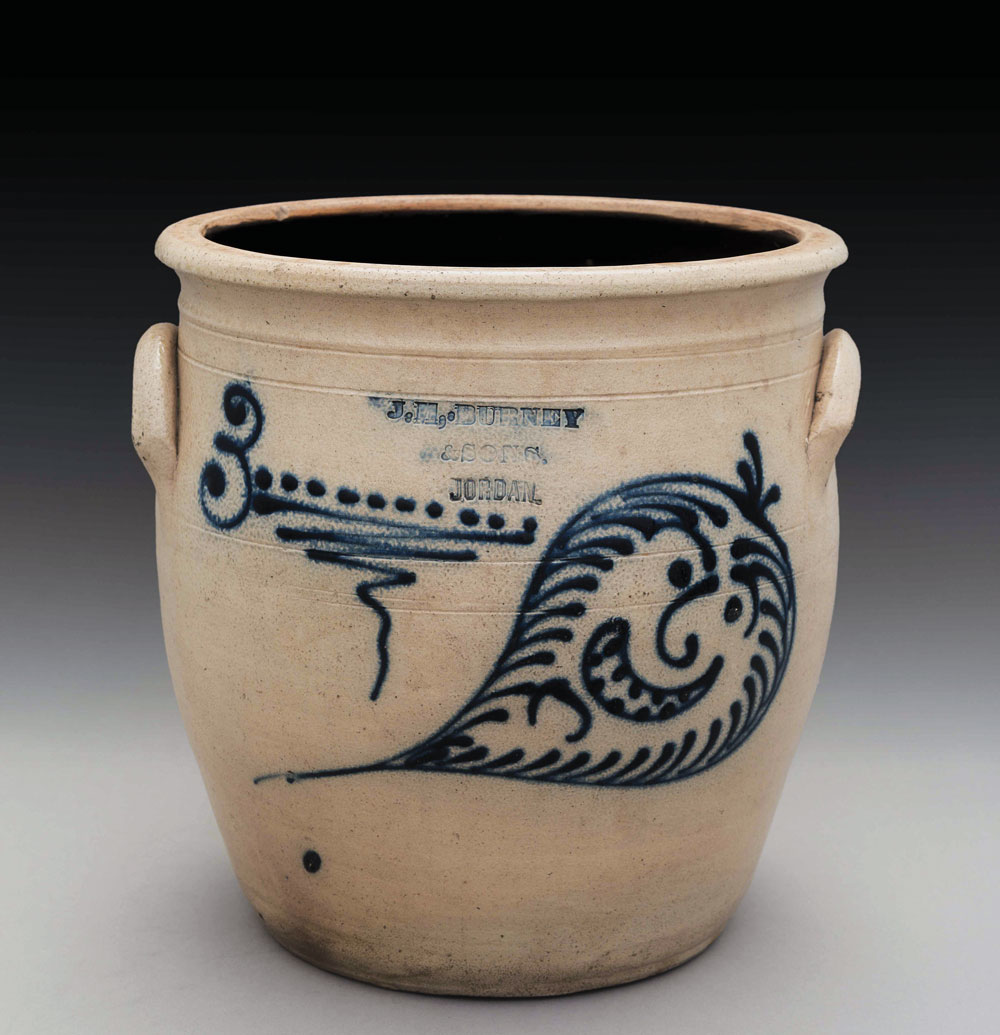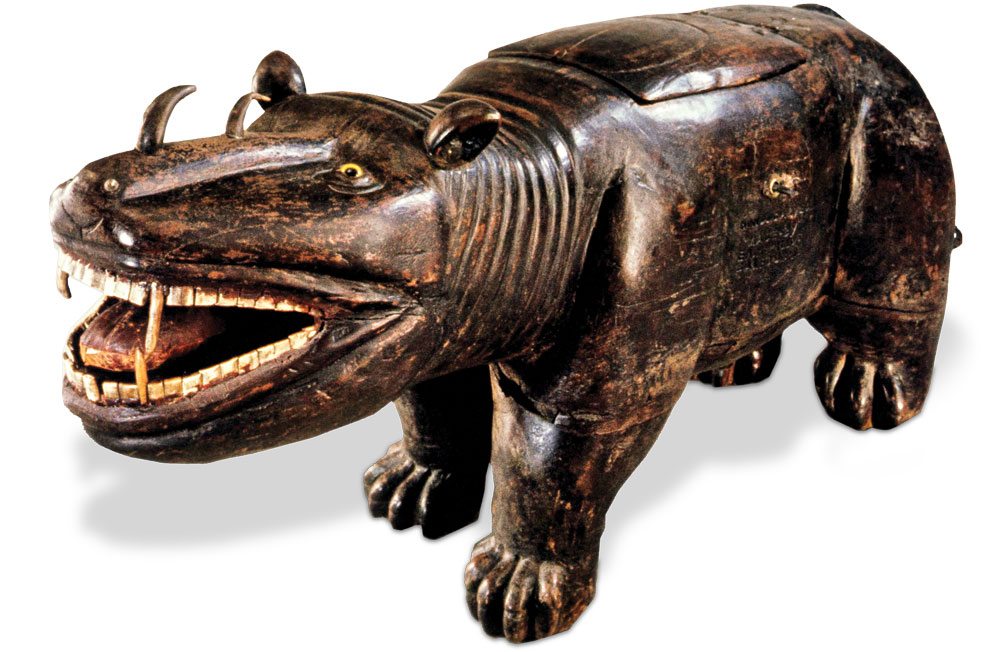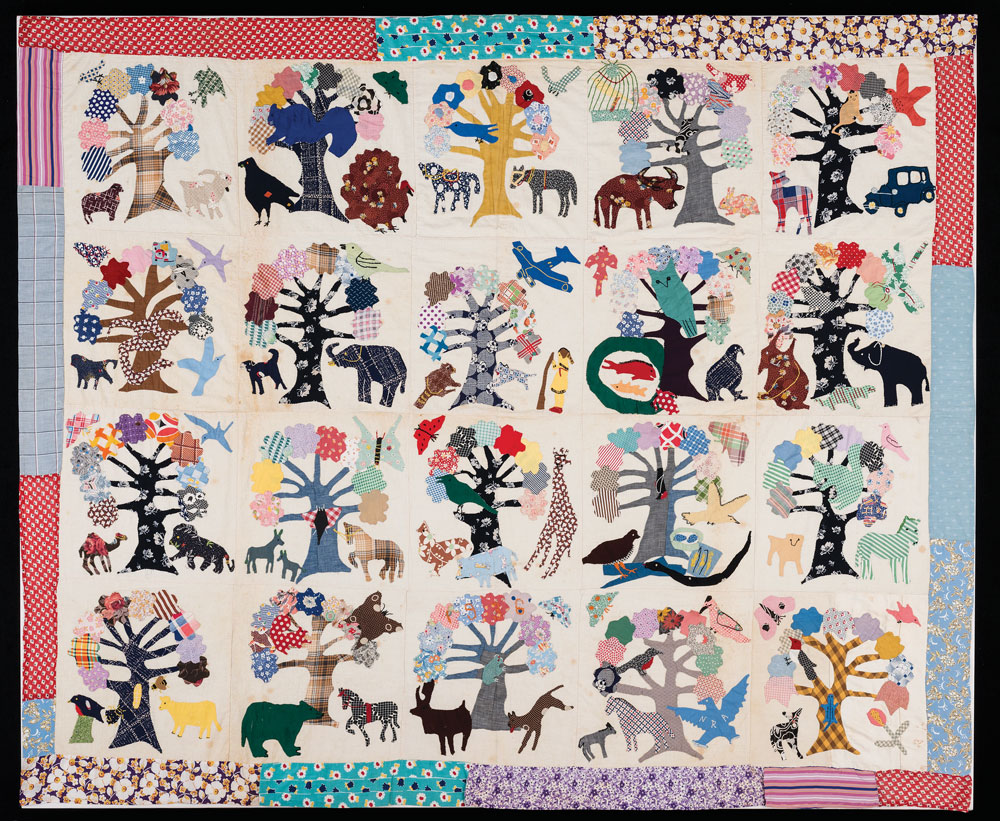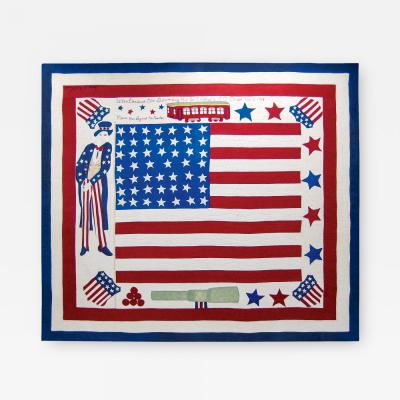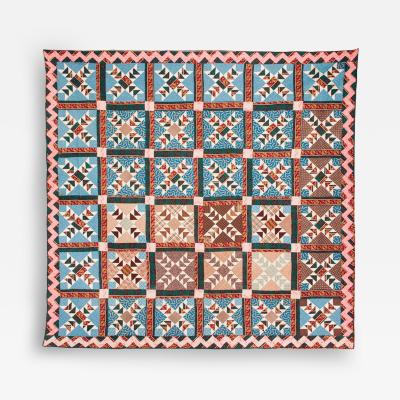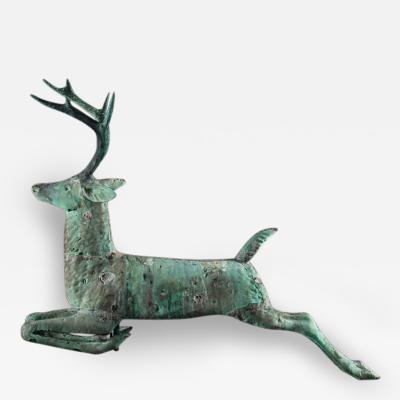A Touch of Whimsy in the Abby Aldrich Rockefeller Folk Art Museum
Many sitters in early American portraits were painted with solemn expressions against relatively plain or academic backgrounds, begging the question to the uninitiated as to whether anyone ever had any fun. In fact, Americans of the past shared similar interests in surrounding themselves with colorful and decorative items as we do today. Whether made for utilitarian purposes or for pure joy, objects could be bright, patterned, and, dare we say, amusing. One obvious source of delight was children’s playthings that squeaked, tumbled, and twirled. But the adult world contained objects with a comparable touch of whimsy, more subtle, perhaps, but no less diverting. The Abby Aldrich Rockefeller Folk Art Museum contains many such examples, of which the three following objects are a random selection.
The three-gallon open cream pot seen in figure 1 is typical in shape and color to stoneware vessels used for storage in the nineteenth century. While these beige or gray pieces commonly had cobalt decoration that made the mundane kitchen item pleasing to look at, James McBurney & Sons of Jordan, New York, took it a step further when they incorporated an image of a grinning turnip. While we see whimsical caricatures on stoneware of this period, the idea of a root vegetable with a personality is somewhat unexpected, and yet is undoubtedly as humorous to us now as it was for those who originally used the pot in their home.
Edgar Alexander McKillop combined the characteristics of a hippo and rhinoceros to come up with the fanciful creature, the hippoceros (Fig. 2). McKillop, a blacksmith living in Balfour, North Carolina, had a keen interest in musical instruments and sculpture. He carved several animals including a kangaroo, lion, and gorilla. His most ambitious project, created in 1926–1927, was this figure, made of several solid blocks of black walnut. Not content to create a static sculpture, McKillop brought the creature to life with sound and movement. He hollowed out the top and inserted a hand-cranked phonograph hidden beneath a hinged door. The sound emanates from the open mouth in which the creature’s stuffed leather tongue moves back and forth. A wire runs from the turntable to the tongue; the rotation of the one causing the wagging of the other. The eyes are glass, and it is said to originally have had rhinestones in its nostrils. This strange and wonderful beast no doubt amused adults as much as it enthralled children.
The Folk Art Museum has an impressive collection of quilts, each with a personal expression of the maker. One of the liveliest examples, from an African-American family living in Baltimore, Maryland, is also one of the most recent additions to the collection and dates to 1936 (Fig. 3). Each of the twenty blocks is made with a wide array of patterned fabrics that contain their own assemblage of animals frolicking around distinctive trees with individualized blooms. There is a bear and horse around one tree, and a giraffe, a pig, and a chicken around another. Perched in branches, a giant squirrel and a butterfly are almost hidden because their patterned fabrics blend with those of the flowers. The imagery creates moments of discovery and delight.
A pot, a phonograph, and a bedcovering sound initially bland by name, yet the three examples shown here are evocative of the imagination and sense of humor evident in many works made by creative individuals who enlivened the daily routines of those living in the past. They are also but a sample of the collections on view at the Abby Aldrich Rockefeller Folk Art Museum. For more information, visit https://www.colonialwilliamsburg.com/do/art-museums/rockefeller-museum. The AARFAM is the loan exhibit for the 2017 Winter Antiques Show in New York City.
-----
Jan Gilliam is the manager of exhibitions and associate curator of toys, and Christina Westenberger is the assistant manager of museum education at the Abby Aldrich Rockefeller Folk Art Museum( AARFAM).
All images courtesy Abby Aldrich Rockefeller Folk Art Museum.
Read related articles: Abby Aldrich Rockefeller and Her Folk Art Museum and Patriotic Folk Art at the Abby Aldrich Rockefeller Folk Art Museum.















